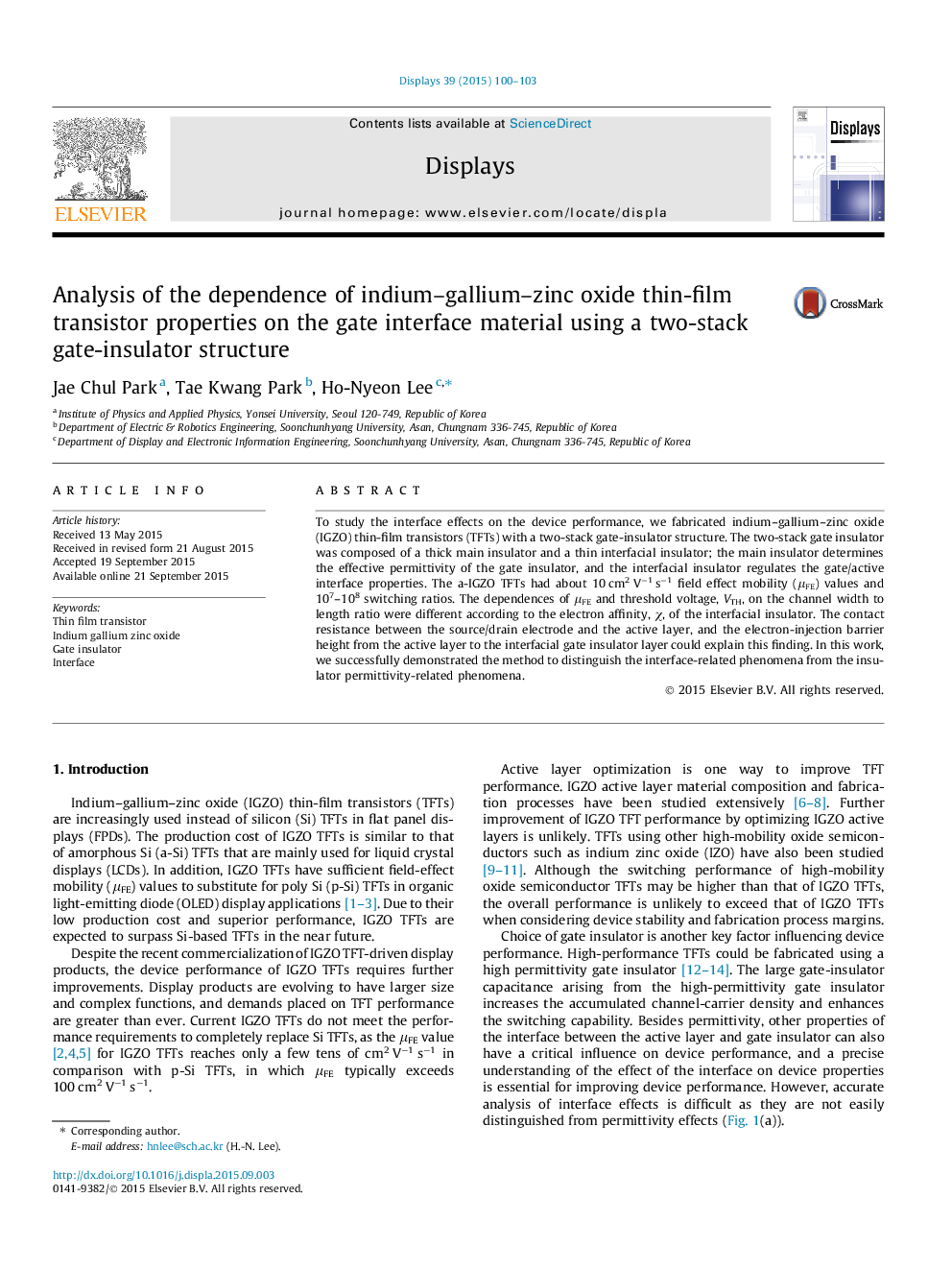| Article ID | Journal | Published Year | Pages | File Type |
|---|---|---|---|---|
| 538804 | Displays | 2015 | 4 Pages |
•Design and demonstration of a two-stack gate-insulator structure for analysis of interface effects.•Dependence of field-effect mobility & threshold voltage on contact resistance & electron affinity.•High-k gate dielectrics such as HfO2 and ZrO2 have been found to have inferior interface properties.
To study the interface effects on the device performance, we fabricated indium–gallium–zinc oxide (IGZO) thin-film transistors (TFTs) with a two-stack gate-insulator structure. The two-stack gate insulator was composed of a thick main insulator and a thin interfacial insulator; the main insulator determines the effective permittivity of the gate insulator, and the interfacial insulator regulates the gate/active interface properties. The a-IGZO TFTs had about 10 cm2 V−1 s−1 field effect mobility (μFE) values and 107–108 switching ratios. The dependences of μFE and threshold voltage, VTH, on the channel width to length ratio were different according to the electron affinity, χ, of the interfacial insulator. The contact resistance between the source/drain electrode and the active layer, and the electron-injection barrier height from the active layer to the interfacial gate insulator layer could explain this finding. In this work, we successfully demonstrated the method to distinguish the interface-related phenomena from the insulator permittivity-related phenomena.
Graphical abstractFigure optionsDownload full-size imageDownload high-quality image (191 K)Download as PowerPoint slide
